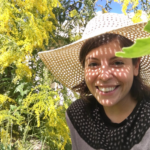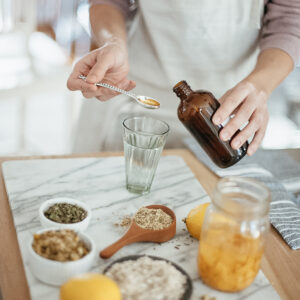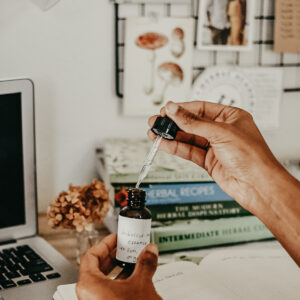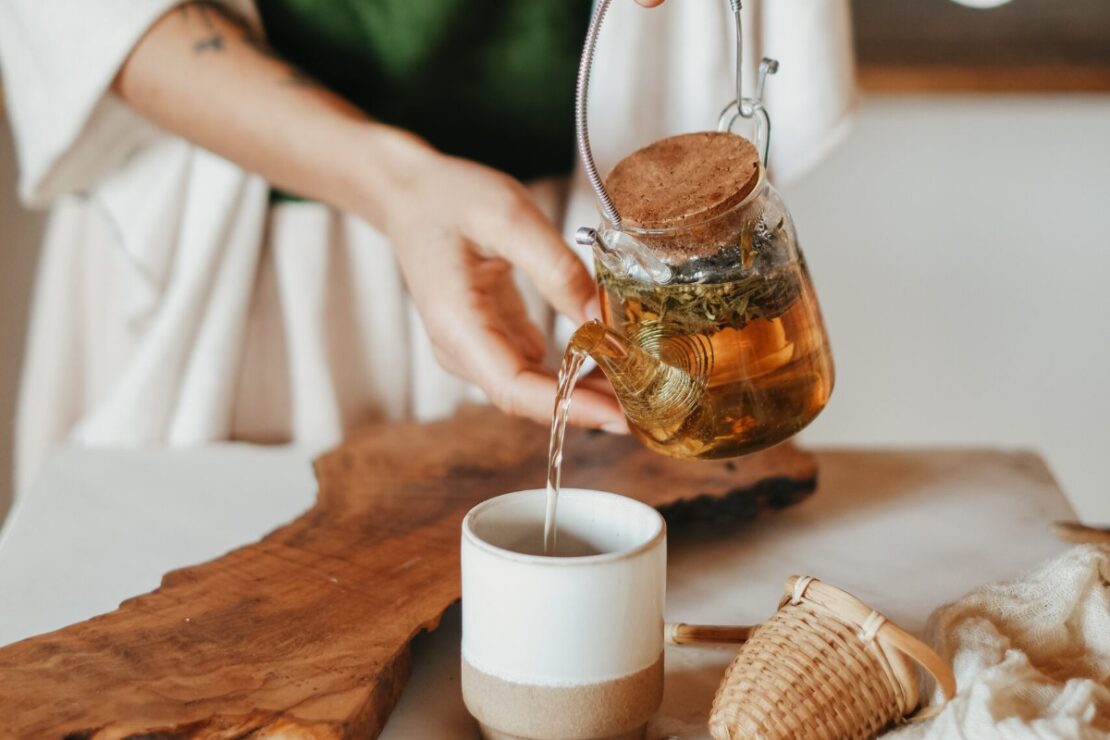
An Herbal Headache Tea Recipe to Soothe Your Mind
Headaches are more than just a nuisance; they’re complex conditions that can truly disrupt your day. The good news? You can be prepared with a well-rounded headache tea blend designed to help your body cope with headaches from a multifaceted perspective, offering comfort and support when you need it most.
Headache triggers often include stress and tension, restless sleep, digestive upset, hormonal changes, environmental sensitivities, and even genetic predispositions. In fact, headaches affect roughly 40% of the global population across all ages, making it less a question of if one will strike, but when (World Health Organization, 2024).

The Headache Connection: Stress, Sleep, and Your Gut
While headaches manifest differently for everyone, stress, poor sleep, and digestive upset are common culprits and often go hand-in-hand with headache incidents. Stress is a major factor. Not only can stress directly cause headaches, but the physical toll and exhaustion from a headache episode can be a stressful experience in itself. This can actually lower your pain threshold, making you more susceptible to future headaches (Sic et al., 2025).
Poor sleep patterns also play a significant role. Just as a lack of quality sleep can trigger headaches, headaches can, in turn, disrupt your sleep, creating a frustrating cycle. When you’re not sleeping well, your ability to cope with stress decreases, and, as we saw above, your pain threshold can also drop, potentially worsening both your headaches and your sleep habits (Korabelnikova et al., 2020).
And let’s not forget the gut-brain connection. Our gut is often called our “second brain” for a reason! There’s a strong bidirectional relationship between the two. In fact, during human fetal development, the cells of the brain and gut develop at the same time into the central nervous system (CNS) and enteric nervous system (ENS). These two systems remain intrinsically linked through the vagus nerve. Early evidence even shows a significant link between digestive disorders and migraine episodes (Hindiyeh & Aurora, 2015). Taking care of your gut can truly benefit your head, and vice versa.
There are often bidirectional relationships between headaches and co-occurring conditions, making it hard to tell which instigated which. Anxiety and depression both have strong rates of concurrence with migraines and tension headaches. Mental health challenges the mind and body, affecting sleep, appetite, mood, and physical tension (Giri et al., 2022). It can be a tough cycle, but not an unbreakable one.
Herbal Allies for Headache Help
This powerful tea blend recipe that we are sharing below combines herbs known for their ability to address common headache triggers like stress, poor sleep, tension, and tummy troubles, offering soothing support and promoting overall well-being.

Passionflower (Passiflora incarnata)
This calming nervine is exactly the ally you need when the world is getting on your last nerve. Known for its relaxing and sedative qualities, passionflower (Passiflora incarnata) helps to calm the mind and can even assist in lowering blood pressure, making it great for taking the edge off tension (Hoffmann, 2003). We’ll use the dried aerial parts in this recipe to aid in tension taming.
Lemon balm (Melissa officinalis)
A truly soothing and uplifting herb, lemon balm (Melissa officinalis) helps to ease tension and reduce stress reactions in the body. It’s often used to lift spirits in times of depression as well as soothe anxiety and worry. Beyond mood support, it can calm the stomach and provide a mild vasodilation, making it a go-to when headaches or migraines are brought on by tension (Hoffmann, 2003). The dried aerial parts will add calming action and a delightful flavor to your tea.
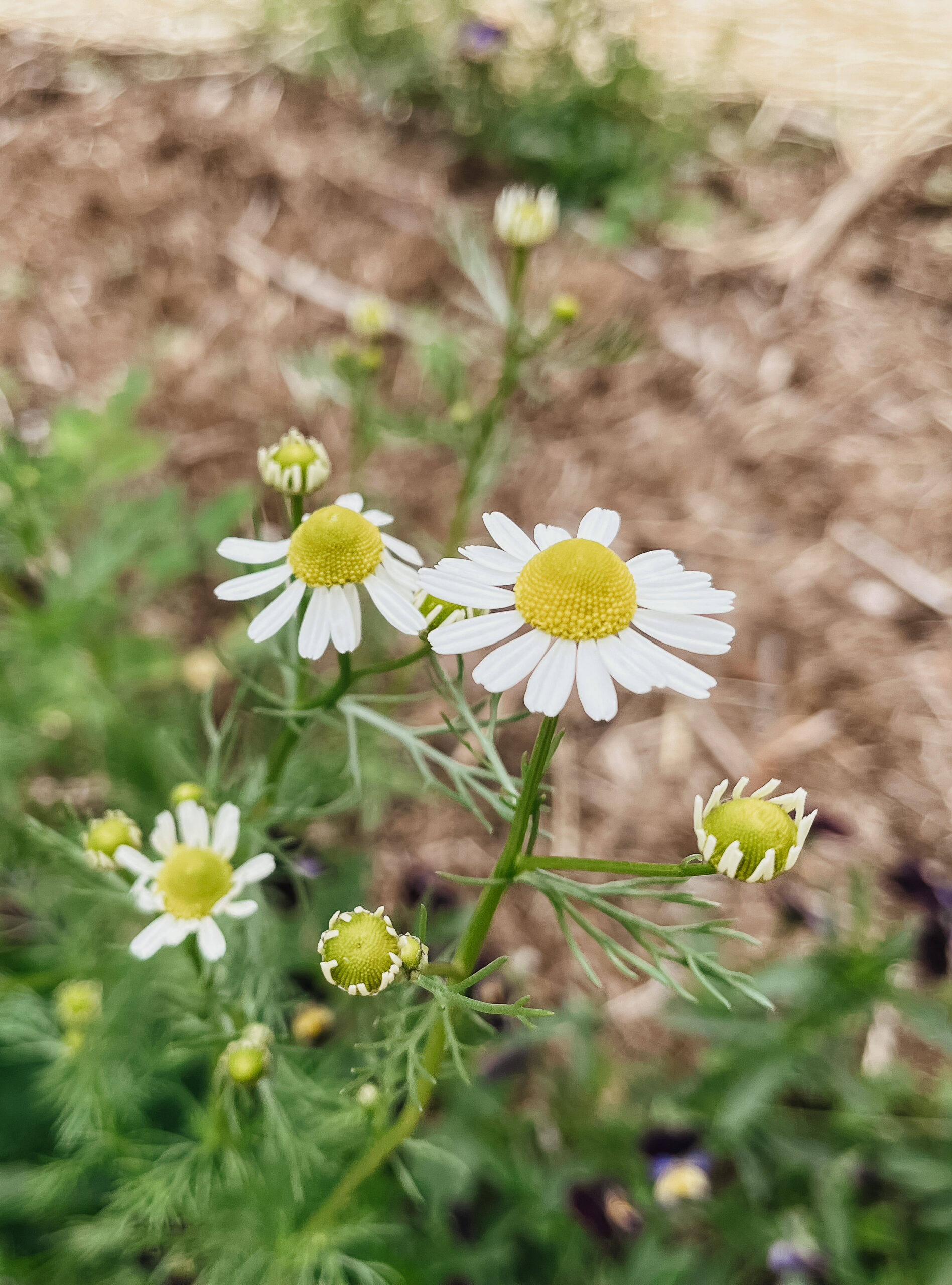
Chamomile (Matricaria chamomilla)
Chamomile (Matricaria chamomilla) flower is a cooling, calming, and uplifting herb to relax an anxious mind and tense body. As an anti-inflammatory, antispasmodic, and nervous system tonic, chamomile can be used to promote a restful state. Not only does it help to calm the mind, but it also soothes the gut (Hoffmann, 2003). Gentle and powerful, it’s no surprise that chamomile is a reliable choice for a headache formula.
Hibiscus (Hibiscus sabdariffa)
A wonderfully cooling, antioxidant, and anti-inflammatory ally, hibiscus (Hibiscus sabdariffa) helps to fight oxidative stress in the body. This is largely thanks to the high concentration of anthocyanins and flavonoids found in its fleshy red calyces. The dried, fruit-like calyx also lends a tart berry flavor to this tea, making it delightfully sippable!
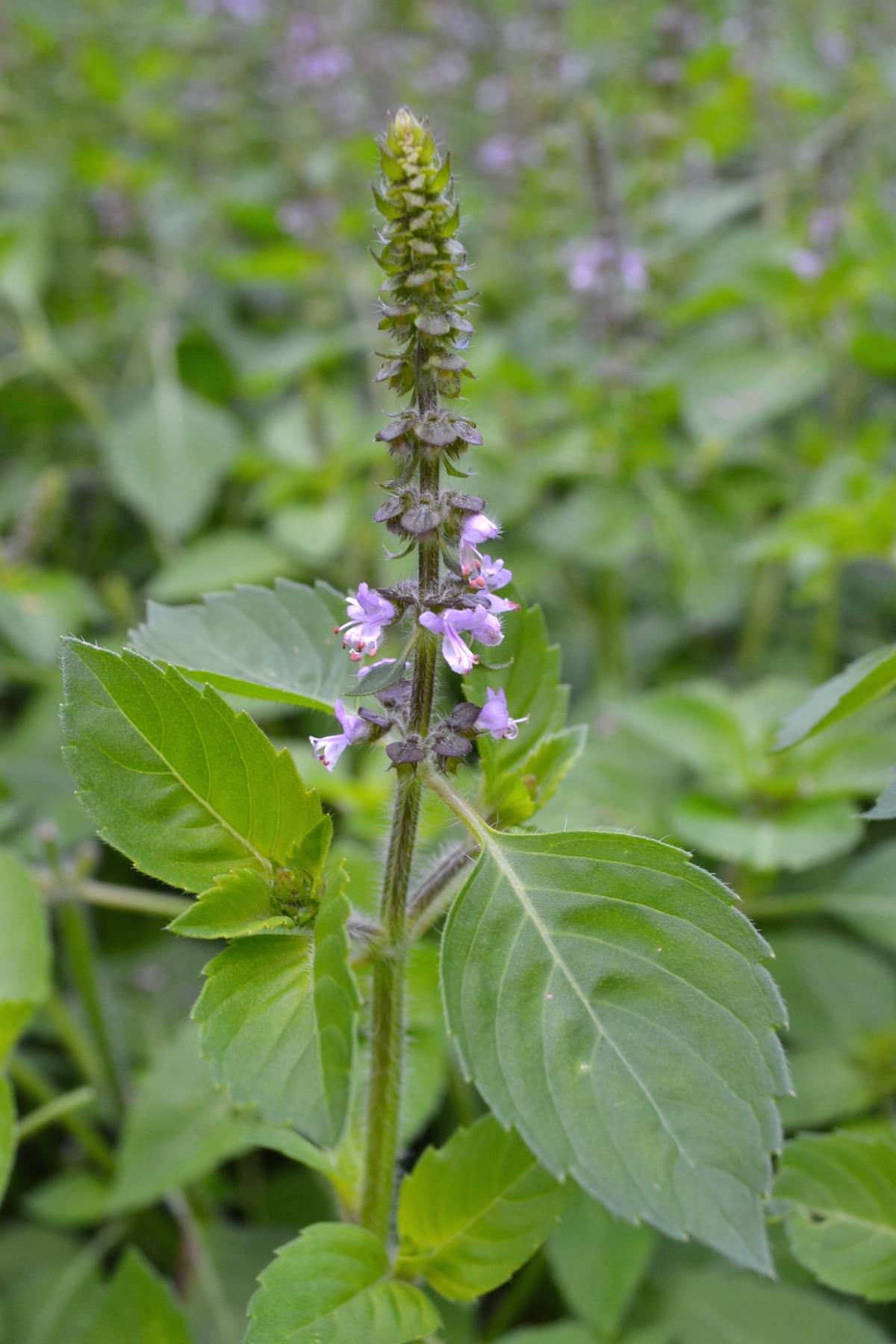
Tulsi (Ocimum tenuiflorum)
Also known as holy basil, tulsi (Ocimum tenuiflorum) is a valuable ally when addressing stress and its effects on the body. Long known as a tonic for boosting vitality, it fights inflammation and can help lower blood pressure (Chevallier, 2000). Holy basil not only helps the body release immediate stress but, with regular use, works to improve your body’s ability to support periods of increased stress over the long term.s We’re adding the dry leaves to this tea blend to increase stress resilience.
Ginger (Zingiber officinale)
This stimulating herb increases activity in both the digestive and circulatory systems (Chevallier, 2000). With its ability to quell nausea, fight inflammation, and assist the body’s transport systems, ginger (Zingiber officinale) is a perfect addition to take the edge off headache symptoms and help the other herbs circulate throughout your body. Ginger also brings a comforting warmth that’s both soothing and invigorating.
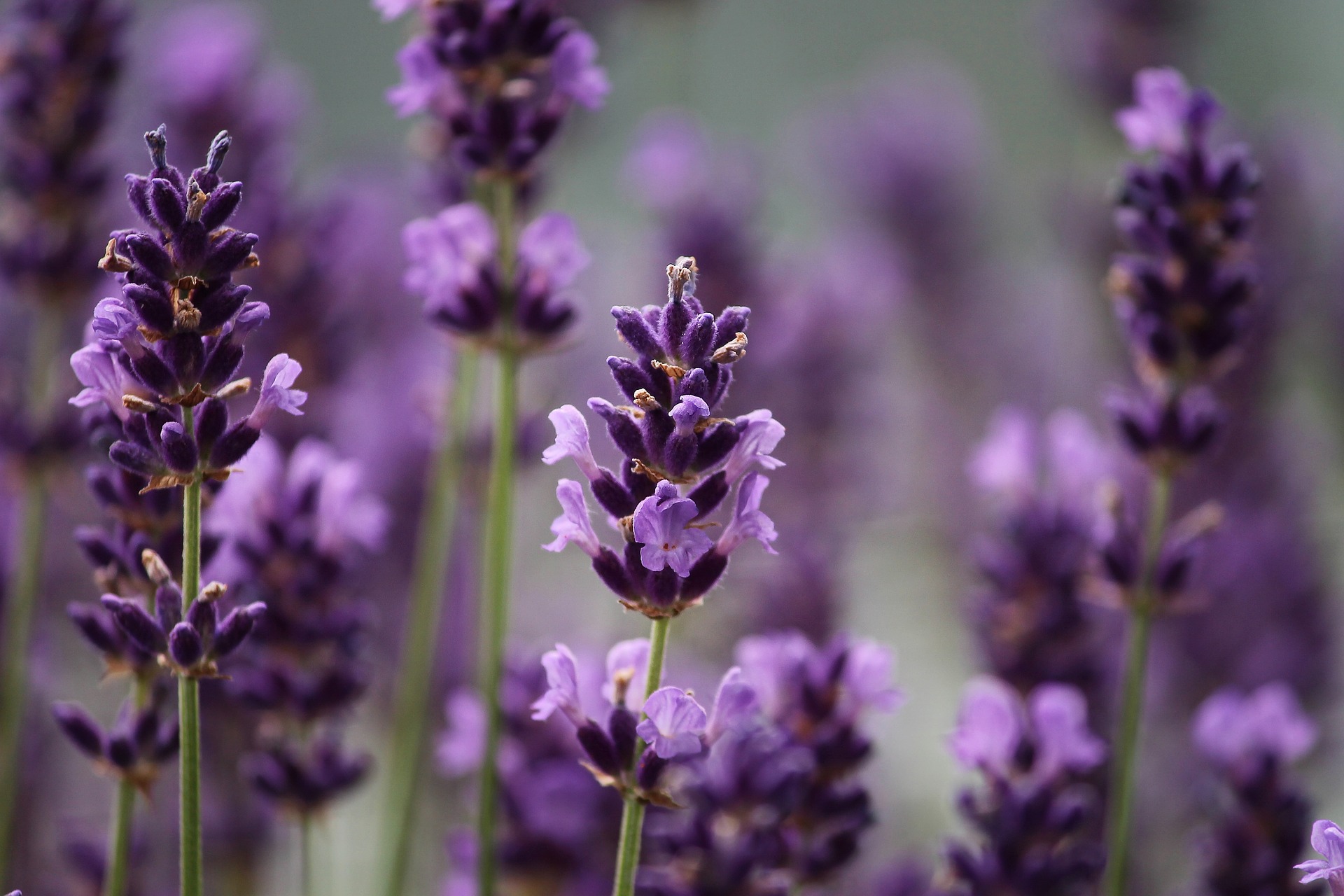
Lavender (Lavandula angustifolia)
A gentle nervine, lavender (Lavandula angustifolia) is effective for easing tension and fortifying an exhausted nervous system. It helps to allay headaches brought on by stress and can also promote better sleep, when poor sleeping patterns may be a key lifestyle factor linked to a higher frequency of headaches (Hoffmann, 2003). The dried flowers bring a gentle cooling power to this recipe, pacifying the heat associated with tension headaches.
Clove (Syzygium aromaticum)
Another stimulating herb, clove (Syzygium aromaticum) is known for its invigorating effects on the mind and body (Chevallier, 2000). By promoting circulation, clove helps the other herbs in this tea blend make their way around your system more effectively, effectively synergizing the formula. The dried flower bud adds to the warm, grounding properties of this tea blend.
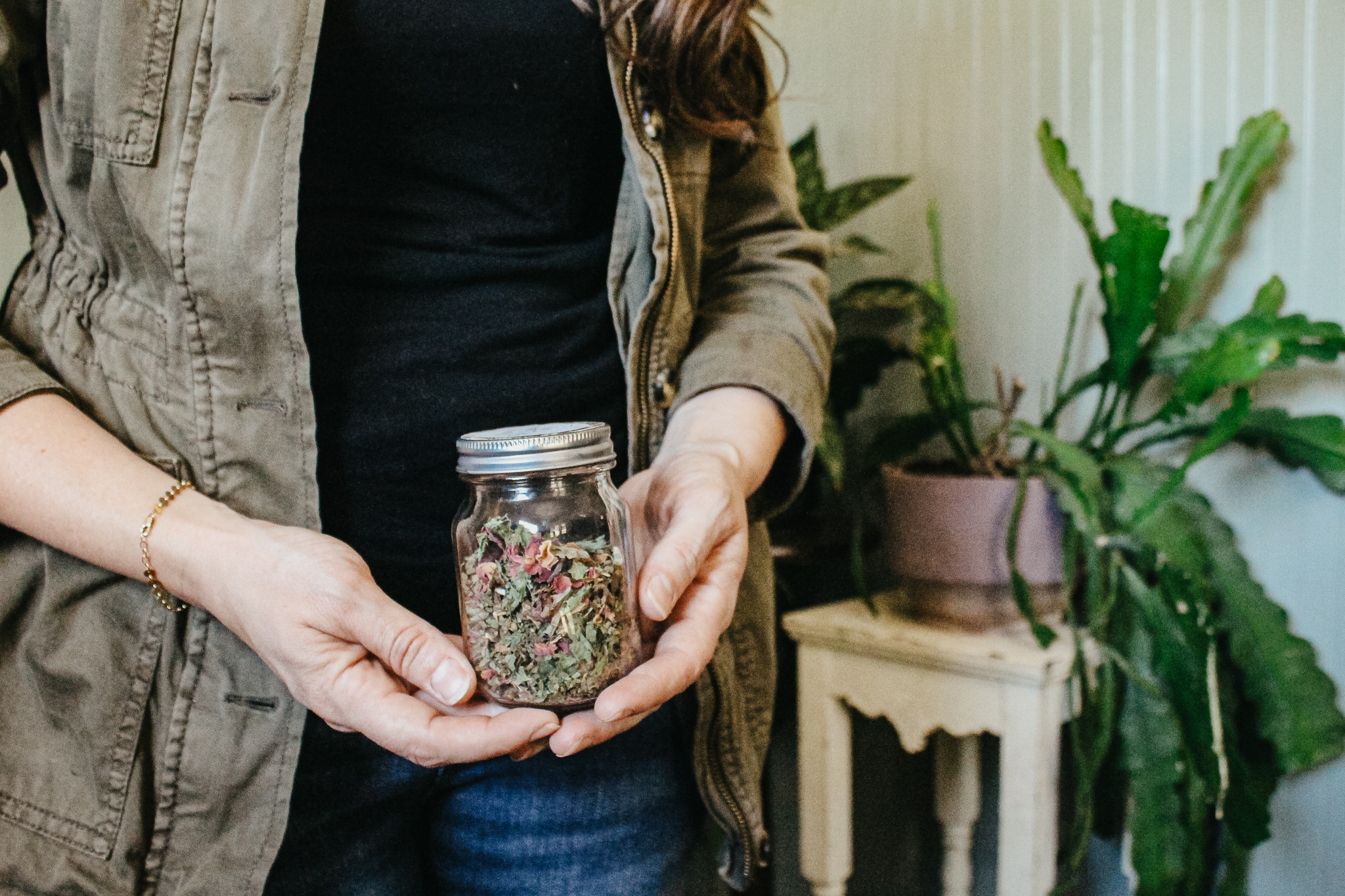
Headache Tea Blend Recipe
This powerful tea blend recipe combines herbs known for their ability to address common headache triggers. All herbs are in dried form.
1 tablespoon passionflower (Passiflora incarnata) aerial parts
1 teaspoon lemon balm (Melissa officinalis) aerial parts
1 teaspoon chamomile (Matricaria chamomilla) flower
1 teaspoon hibiscus (Hibiscus sabdariffa) calyx
½ teaspoon tulsi(Ocimum tenuiflorum) aerial parts
½ teaspoon ginger (Zingiber officinale) rhizome
¼ teaspoon lavender (Lavandula angustifolia) flower bud
1 whole clove (Syzygium aromaticum) bud
Recipe Notes:
In order to effectively deliver herbs to the relevant body systems, a strong brew is required. We achieve a strong brew by increasing the amount of plant material and steeping the brew for longer. This recipe calls for quite a bit of plant material compared to the amount of water it will be brewed in, and also calls for a much longer steeping time than store-bought teas. This is intentional and allows for maximum efficacy.
If you do not own a French press, you can absolutely brew this tea by boiling 2 cups of water in a pot on the stove, adding the herbs to the pot once it has boiled and been taken off the heat, covering and infusing for 15-20 minutes, and then straining it through a fine mesh strainer. This method just requires a little bit more cleanup. There are also larger loose-leaf tea infusers on the market that are designed to hold more substantial amounts of plant material, like these stainless steel infusers that make brewing loose-leaf tea a snap. Herbal Academy’s Goods Shop also sells a glass tea infuser that steeps two cups at a time!
During my experimentation with this recipe, I made this tea both hot and iced, as soothing temperatures vary from person to person and headache to headache. For an iced version, I would suggest reducing the amount of water used to brew the tea by half so that your finished tea is not too watered down once it’s poured over ice. I also suggest adding any sweetener before you ice it, while it is still warm.
In Closing,
Having this well-rounded headache tea blend on hand can make all the difference when a headache threatens to derail your day. Headaches are multifaceted and are often correlated with stress, poor sleep, and digestive upset. We can better work to interrupt those cycles by building herbal blends that have a multifaceted approach to tackling symptoms as well as building the body’s stress resilience. By supporting your body’s natural ability to cope with stress, improve sleep, and promote digestive harmony, you’re taking a holistic approach to your wellbeing.
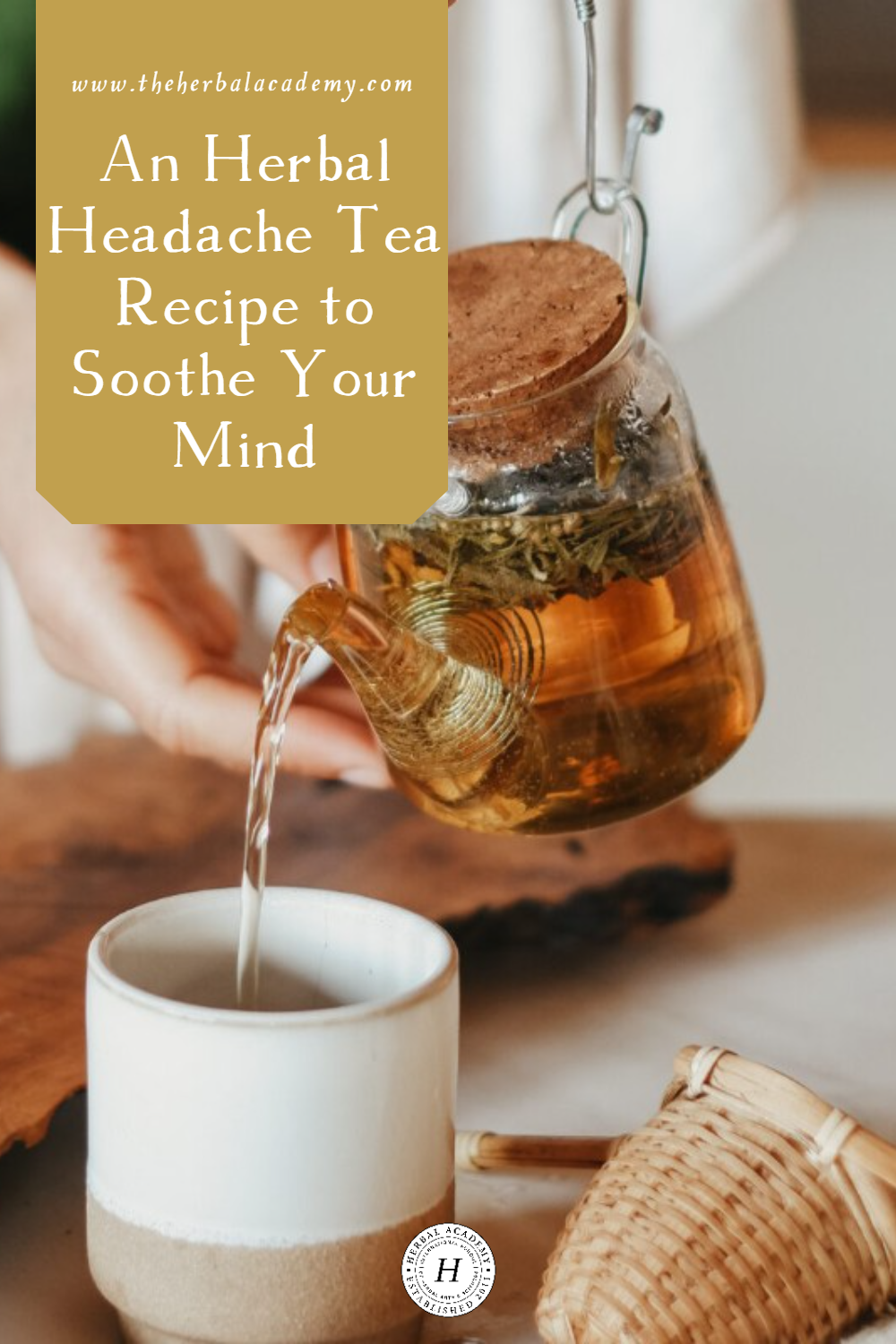
REFERENCES
Chevallier, A. (2000). Encyclopedia of herbal medicine. DK.
Giri, S., Tronvik, E. A., & Hagen, K. (2022). The bidirectional temporal relationship between headache and affective disorders: Longitudinal data from the hunt studies. The Journal of Headache and Pain, 23(1). https://doi.org/10.1186/s10194-022-01388-x
Hindiyeh, N., & Aurora, S.K. (2015). What the gut can teach us about migraine. Current Pain & Headache Reports, 19, 33. https://doi.org/10.1007/s11916-015-0501-4
Hoffmann, D. (2003). Medical herbalism: The science and practice of herbal medicine. Healing Arts Press.
Korabelnikova, E.A., Danilov, A.B., Danilov, A.B., Vorobyeva, Y.D., Latysheva, N.V., & Artemenko, A.R. (2020). Sleep disorders and headache: A review of correlation and mutual influence. Pain and Therapy, 9(2), 411-425. https://doi.org/10.1007/s40122-020-00180-6
Sic, A., Bogicevic, M., Brezic, N., Nemr, C., & Knezevic, N. N. (2025). Chronic stress and headaches: The role of the HPA axis and autonomic nervous system. Biomedicines, 13(2), 463. https://doi.org/10.3390/biomedicines13020463
World Health Organization. (2024). Migraine and other headache disorders. https://www.who.int/news-room/fact-sheets/detail/headache-disorders

